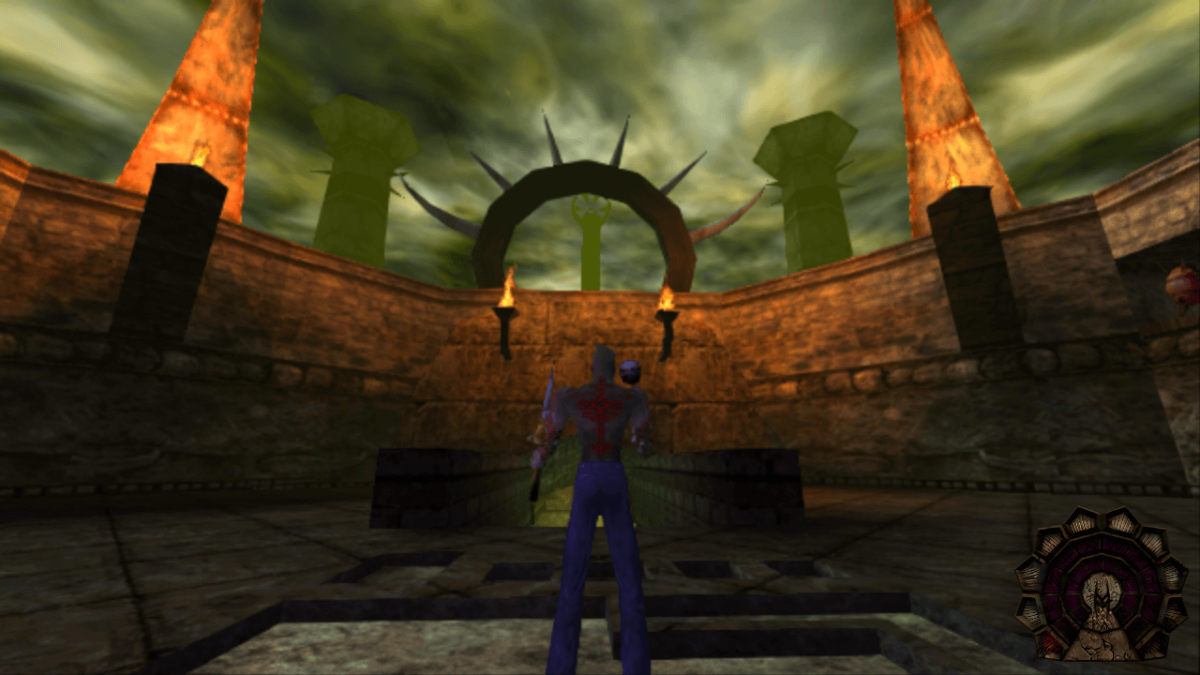“There are parts of the game that I’m haunted by in my dreams,” says Nightdive head of business development Larry Kuperman. Ordinarily, it might sound like hyperbole, but this is Shadow Man we’re talking about. A game based on an especially gritty comic book series, which begins with Jack the Ripper committing suicide in order to run an asylum in an underworld called the ‘deadside’ and mines a rich vein of the macabre from there.
Following a PC re-release in 2013 and a true remaster in 2021, Shadow Man: Remastered now makes its way to PlayStation 4/5, Xbox One and Series S/X as of Jan. 13. and Nintendo Switch on Jan. 17. Like all Nightdive’s releases, it expertly preserves a piece of gaming history from an especially important era. But there’s something else about Shadow Man, something of an edge that we’re simply not used to from modern games.
[mm-video type=video id=01fdytrdwkt36d2h2g09 playlist_id=none player_id=none image=https://images2.minutemediacdn.com/image/upload/video/thumbnail/mmplus/01fdytrdwkt36d2h2g09/01fdytrdwkt36d2h2g09-0bf7c8ff130aee6d15a877e58c19fd4c.jpg]
And even aside from being one of CEO Stephen Kick’s formative titles growing up, it’s this boundary-pushing nature of the game that made it an important project for the studio.
“It was not done just because we knew that there was going to be a lot of excitement about the remaster,” says Kuperman. “It was done because we wanted to restore a game we felt was significant historically.”
Imagine pitching this game to triple-A publishers today: using the teddy bear of his dead brother Luke, Michael LeRoi travels to the deadside to stop a sinister entity called Legion and five undead serial killers from assembling an immortal army and unleashing it on the liveside. Oh, and instead of assault rifles, the player’s armed with abilities inspired by voodoo and Cajun mythology.

This remaster, then, is a reminder that games were given greater license to push boundaries back in 1999. To take something as unsettling as Comic publisher Valiant’s Shadow Man series and turn it into an interactive medium. It’s something original developer Acclaim – who bought the comic book rights in 1997 – did especially well for the time, conveying the original artists’ styles with off-kilter architecture which seems to be leaning in threateningly over Mike. And that sense of atmosphere is retained in the remaster, even after retexturing and relighting.
That’s in no small part down to Nightdive’s close relationship with Valiant, which Kuperman says “began at year one” of the company’s history, and whose publisher Fred Pierce tells me the remaster is “wonderful”. Just as Nightdive seeks out original developer talent for many of its projects, Pierce’s team has been on hand to consult with the studio during development. “They’ve asked ‘Does this look good? Does this make sense? Does that make sense?’” says Pierce. “I don’t think we’ve had to say no to anything.”

At the same time Acclaim took inspiration from Valiant, and later Nightdive for the remaster, Valiant’s writers and artists were also inspired by the direction Shadow Man took in the game, making it the kind of multimedia universe that many IPs would strive for in years to come. And once again, that denotes the title’s importance. “Not only did we help generate the comic book,” says Pierce, “but we put the deadside, which originated in the game, into the comic book.” That twisted realm which seems so central to the Shadow Man experience to anyone who’s only ever been exposed to the game wasn’t part of Jack Boniface’s original story in the comics. Only after the game did it wind its way onto ink and paper.
Not that the game’s an all-out assault on the nerves for its duration. Mike begins the story in the liveside, and it has a way of keeping its powder dry for extended periods between its explicit horror moments – the tight, enemy-filled corridors of the Asylum, and temples where rivers of blood flow. There are extended, and singularly demanding, platforming sequences. There are collectibles. And these moments of reprieve let you appreciate the world you’re inhabiting, how complete it feels (thanks again to its comic book origins) and how distinct its Cajun-inspired lore feels from the rest of ‘90s gaming.

For fans who played Shadow Man when it was originally released, the remaster isn’t just a chance to play with the convenience of running on modern hardware at 4K 60fps, but a chance to delve deeper into the original content, in the form of previously cut levels Nightdive has restored and included. We have legendary retro-era composer Tim Haywood to thank for that.
“We were able to work with some of the original devs,” says Kuperman. “Haywood had done some introductions for us, and [through those contacts] we were able to find the code for the incomplete levels that were left out of the original.” Those cut levels, Summer Camp – Florida, Salvage Yard and Asylum Station represent a swathe of additional content and “significant drama” to the game.

Games are certainly capable of tackling dark subject matter today, and as production values have increased, they’re able to do it with a level of polish to rival cinema. But those soaring production values have also dictated that the edgier material be left to the indies with smaller overheads, while the mass market titles play it much safer and roll out the next live service game with weekly events where you can win an epic assault rifle skin. Shadow Man reminds us of a time when the biggest releases were sometimes also the bravest.
And ironically, while games have pushed moody and gruesome material to the margins, the exact opposite has happened in Shadow Man’s original home. “The comic book industry was at a point in time when we launched Shadow Man of trying new things,” says Pierce. “It’s always been a very dark comic, and horror is now a huge portion of the comic book industry today.”
Written by Phil Iwaniuk on behalf of GLHF.
[listicle id=1382480]
